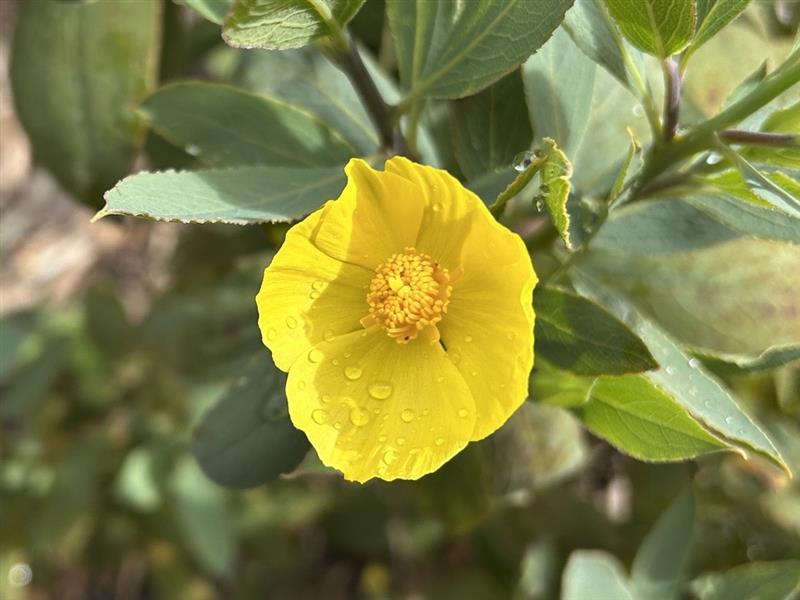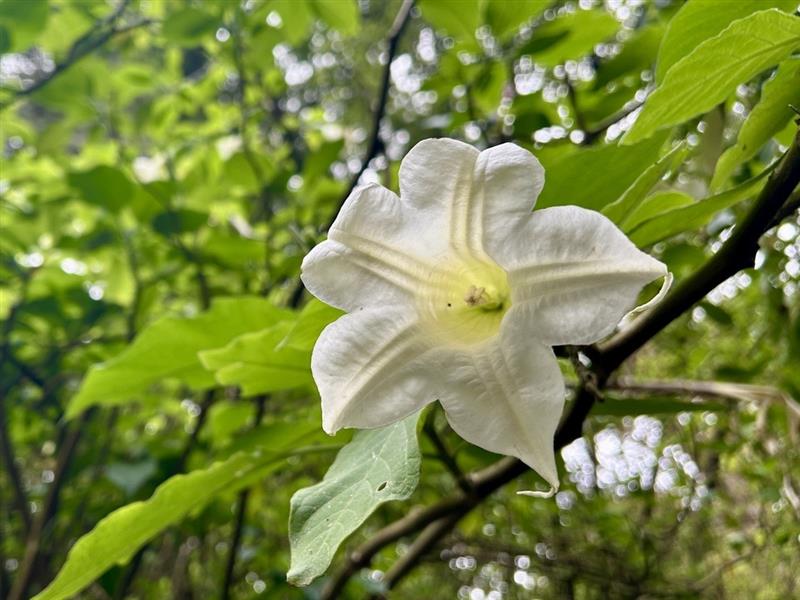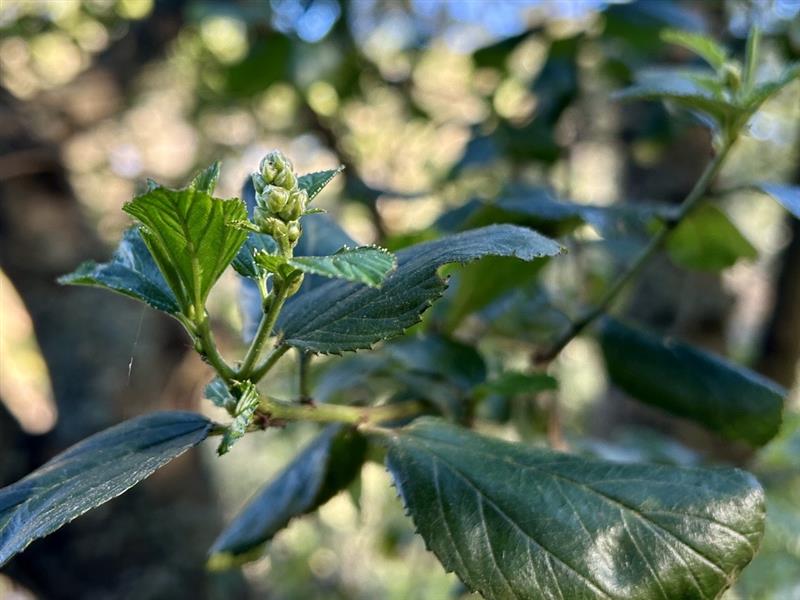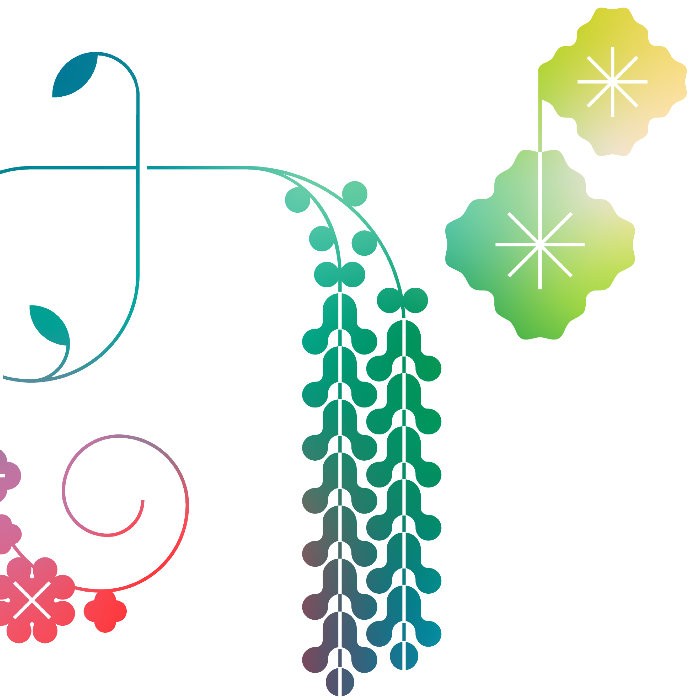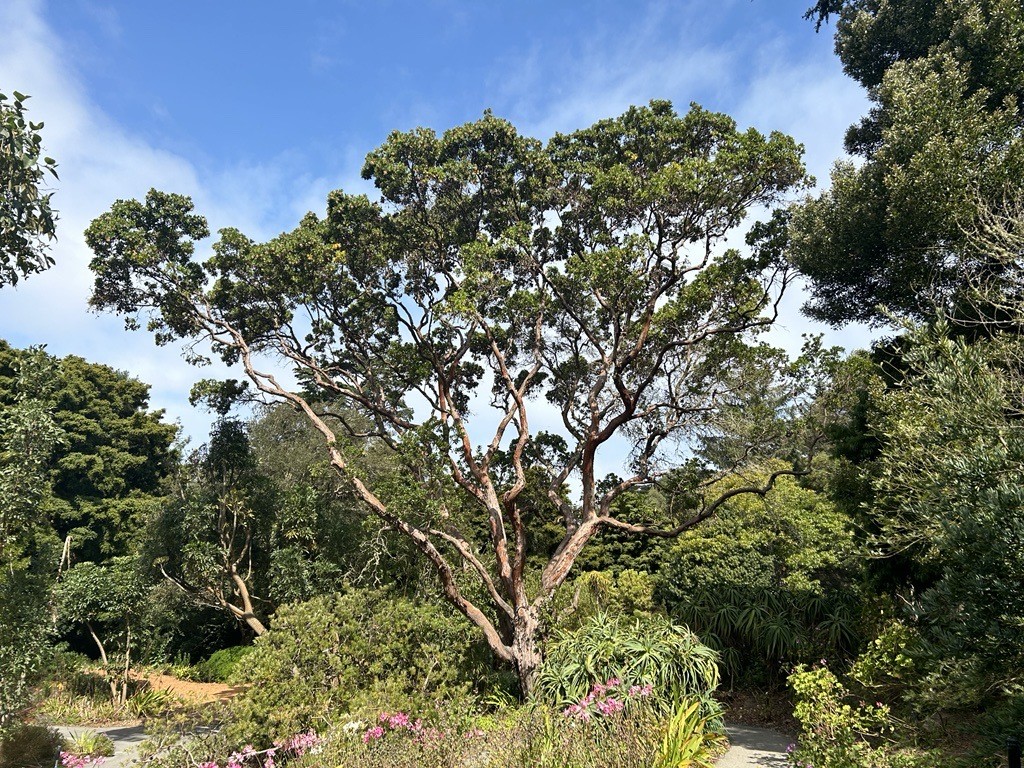
Curator’s Corner – Arbutus canariensis
According to the IUCN Red List, this species is classified as Near Threatened. It is an example of what can happen when protective measures are enacted to revitalize endangered species.
Profile
Scientific name: Arbutus canariensis, also known as madroño canario – Canary Island strawberry tree
Family: Ericaceae
Environment: Sunny slopes between 500-1,000 meters above sea level
Bloom: September-February
Plant type: Tree
Uses: : Ornamental, Indigenous Medicine
Location: San Francisco Botanical Garden South Africa Garden and New Zealand Garden
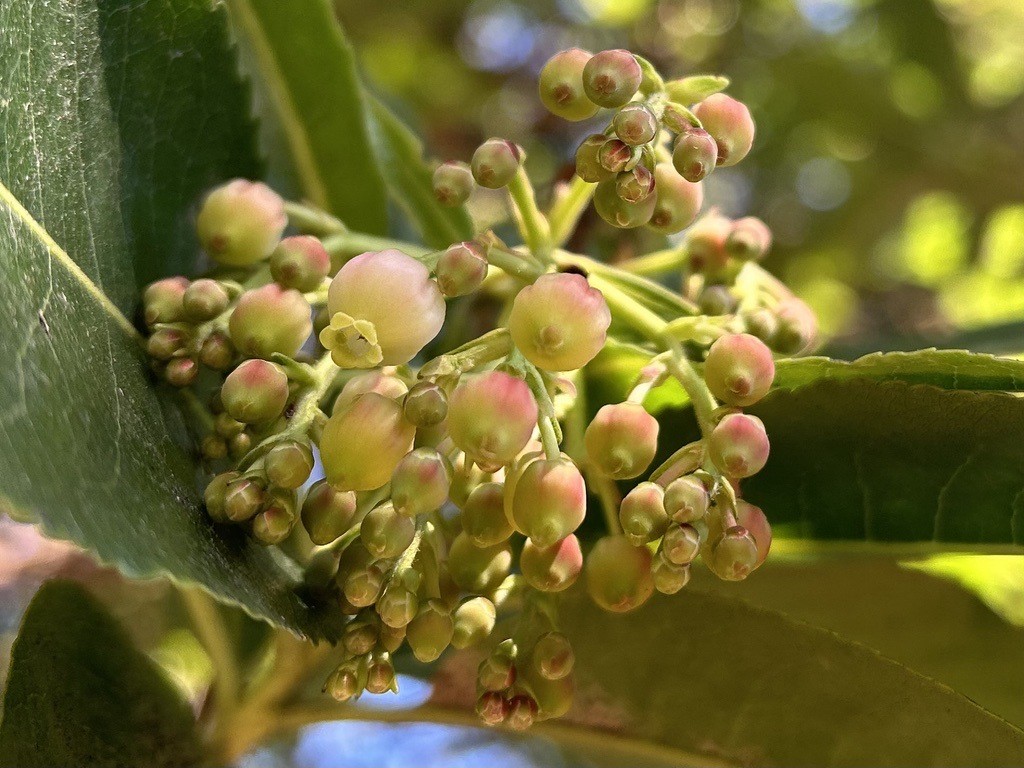
The inflorescence of A. canariensis is a pendulous, terminal cluster of many flowers with leafy bracts. The flowers are fragrant, with an urceolate corolla up to 1.5 cm long, varying in color from white to pink.
Arbutus canariensis, commonly known as madroño canario (Spanish) or the Canary Island strawberry tree, is a distinctive tree in the Ericaceae family. As its name suggests, A. canariensis is endemic to the Canary Islands of Spain. According to the IUCN Red List, this species is classified as Near Threatened. It is highly fragmented, with sub-populations occurring at elevations between 500 and 1,000 meters above sea level, scattered throughout clearings and ridges in the Canary Laurisilva forests and on steep, sunny slopes of Tenerife, as well as fewer, isolated individuals on La Palma, La Gomera, and El Hierro. Due to increased protection and reduced habitat loss, A. canariensis populations have recovered over the past 25 years and are now stable. There are currently no threats nor continuing decline, suggesting a positive trend, given that fewer than 10,000 individuals were estimated in 1998 when the species was listed as Vulnerable.
Reaching heights of 3–4 meters, and occasionally up to 10 meters, A. canariensis boasts a dense, rounded crown and distinctive bark. This bark maintains a bronze color for most of the year but peels away in flakes, annually, to reveal a smooth, fresh trunk. Pale green, with faint yellow markings, canariensis trunk will mature to reddish orange within the year. In hotter climates, the bark takes on a purple hue. This peeling process is shared trait among other trees, such as Arctostaphylos sp. and Betula papyrifera, and serves protection against harmful pathogens, extreme weather and wildfire, reduces water loss, and provides stability. The oldest parts of the trunk and main limbs retain their bark, gradually developing an irregular checkered pattern. The leaves are oblong to lanceolate, up to 15 cm long, with serrate edges, leatherlike and glossy dark green on top, with a glaucous underside and occasionally hairy midribs.
Canary Island strawberry tree (Arbutus canariensis)

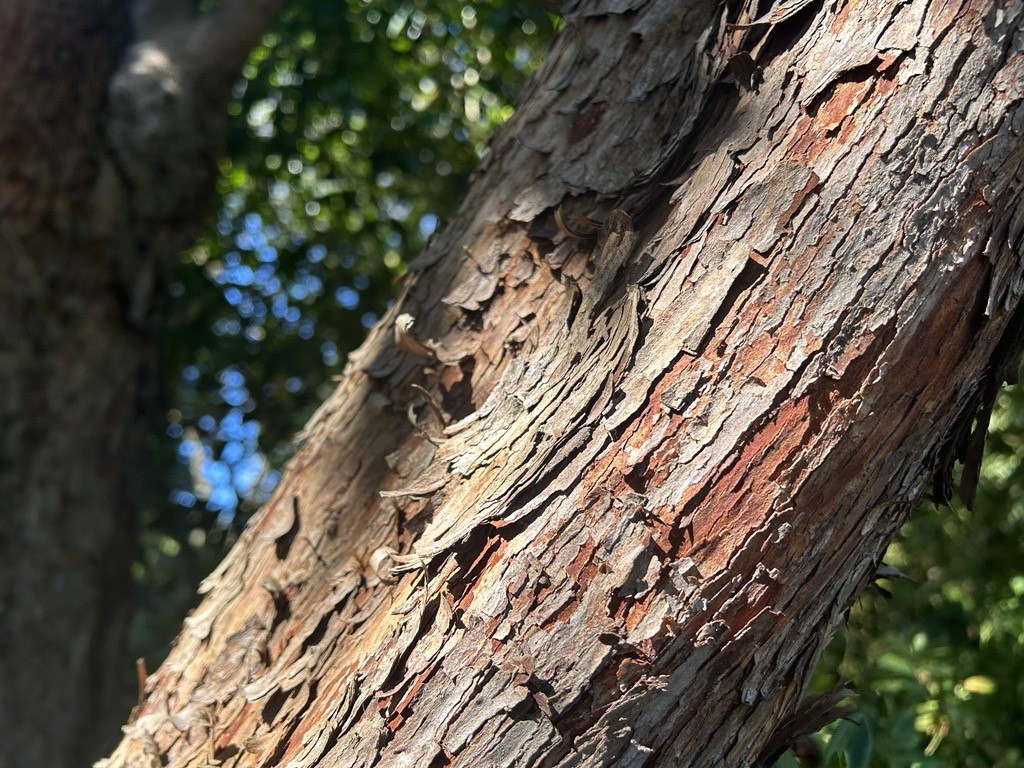
Typically blooming in autumn or early winter, the inflorescence of A. canariensis is a pendulous, terminal cluster of many flowers with leafy bracts. The flowers are fragrant, with an urceolate corolla up to 1.5 cm long, varying in color from white to pink. Ripening in fall, fruits are rounded and knobby, 2–3 cm across, with a granular surface that matures to a yellow-orange color. Edible, the fruits have a fleshy texture like apricots, sometimes described as creamy, with a flavor ranging from mealy to sweeter depictions like that of papaya or kiwi (not at all like strawberry). Though written accounts are few, oral history and local knowledge detail A. canariensis as a tasty fruit, rich in Vitamin C; once serving as a nutrient source for the Benahoarita and Guanche, indigenous peoples of La Palma and Tenerife respectively.
A. canariensis is an example of what can happen when protective measures are enacted to revitalize endangered species. Gardens of Golden Gate Park is fortunate to have two remarkable specimens, one that is rumored to have been planted around 1890+/- (XY-1941*A) located in 27C – South Africa, and the other of unknown age and planting date (XY-0704*A) in 42C – New Zealand Garden. These legacy trees highlight the significance of our conservation efforts and our role in educating the public.
Keep an eye out for Arbutus canariensis at San Francisco Botanical Garden!
Text and photos by Royal Jenkins
